A diet rich in omega-3 foods during pregnancy has beneficial effects on the brain development of children and adolescents
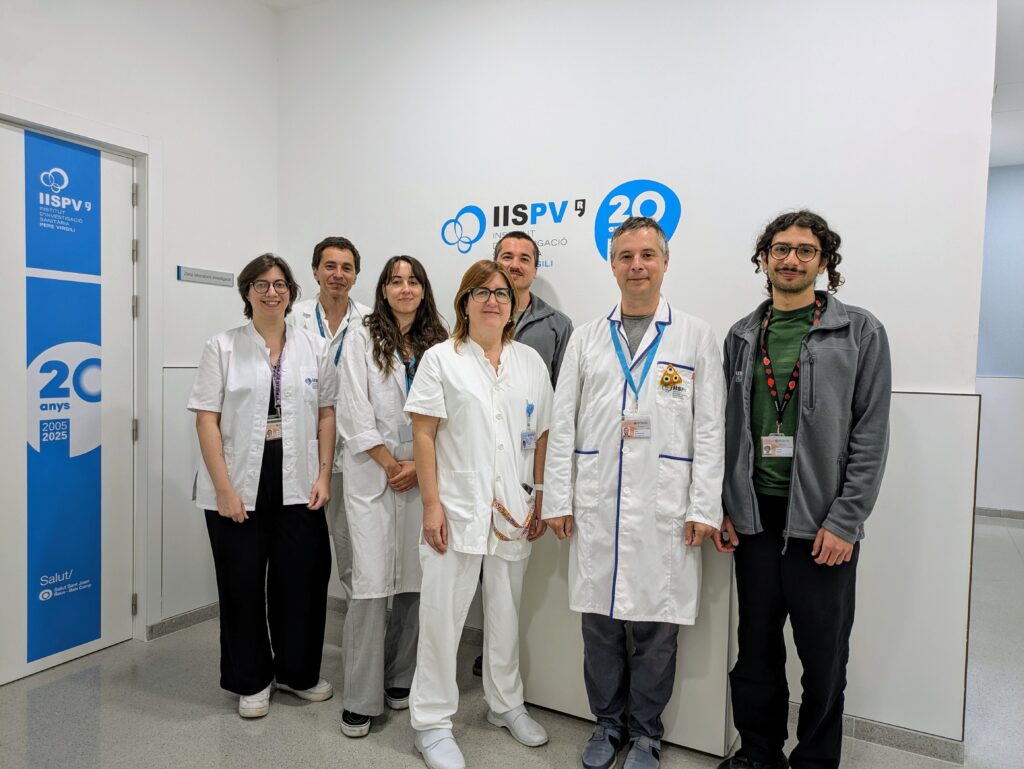
The consumption of nuts during pregnancy, especially walnuts, benefits the neuropsychological development of children and adolescents, according to a study by the Institut d’Investigació Sanitària Pere Virgili (IISPV), titled Maternal prenatal nut and seafood consumption and child neuropsychological function from 4 to 15 years of age: a population-based cohort study, and published in The American Journal of Clinical Nutrition. The study, led by the Clinical and Epidemiological Neuroscience Research Group (NeuroÈpia) of the IISPV, includes contributions from Barcelona Institute for Global Health (ISGlobal), a centre supported by the “la Caixa” Foundation, and the California Walnut Commission, and is also included in the INMA project. This observational study focuses on the influence of maternal diet during gestation, a critical period for early brain development, and also highlights adolescence as another key stage when several brain regions continue to mature.
A sample of 1,737 mother-child pairs from four Spanish regions was studied: Asturias, Guipúzcoa (Basque Country), Sabadell (Catalonia) and Valencia. Maternal diet was analyzed using a food frequency questionnaire, while the children’s neuropsychological function was assessed through standardized tests measuring reaction time and variability (attention), working memory, and fluid intelligence.
The research took into account the consumption of fish—especially fatty fish—which, like walnuts, contains high levels of omega-3 fatty acids. These healthy fats have been shown to have a positive impact on the brain development of children and adolescents, according to the study’s findings. However, the researchers leading the project caution that fatty fish consumption should be approached carefully, and the recommended portions established by the WHO, via the European Food Safety Authority (EFSA) and the Spanish Agency for Food Safety and Nutrition (AESAN), should not be exceeded. Ariadna Pinar Martí, the study’s lead researcher, notes that high consumption of walnuts and fatty fish is associated with improvements in attention, working memory, and fluid intelligence. She adds that the omega-3 fatty acids present in these foods partially contribute to this relationship with neuropsychological development, particularly regarding attention.
Impact on risky decisions
The NeuroÈpia Research Group continues to investigate how maternal consumption of nuts and fish influences the brain development of offspring. They have also focused on the acquisition of more complex skills, such as risky decision-making in eleven-year-old children. In this regard, the article Maternal nut and fish consumption during pregnancy and child risky decision-making at 11 years old explores whether a maternal diet that includes these foods is associated with certain cognitive functions and behaviors, such as impulsivity. This study, led by researcher Marina Ruiz Rivera, has been published in the European Journal of Child and Adolescent Psychiatry. It emphasizes that the consumption of nuts and fish during pregnancy may have an effect on complex brain functions, such as decision-making.
The final sample consisted of 1,386 preteenagers and their mothers, with 1,081 participants specifically assessed for decision-making. According to Ruiz Rivera, higher maternal consumption of nuts during the first trimester of pregnancy was associated with a lower score in risky decisions in eleven-year-old children. Moderate fish consumption was associated with a higher impulsivity index in children of this age. Therefore, this study “adds to the evidence on the importance of nutrition during pregnancy for complex neuropsychological functions”. The study also emphasizes that “the available data are limited to eleven years of age, a stage in which the prefrontal cortex is not fully developed”, and therefore “a definitive causal relationship cannot be established”.
Looking ahead to future research in the field of nutrition, the NeuroÈpia Research Group highlights the importance of incorporating neuroimaging techniques. Applied specifically to the cohort studied in the two projects, “it will open up new scenarios for novel measurements, represent an innovation in this field, and allow us to examine whether diet during pregnancy influences not only cognitive functions but also brain structure”, emphasizes Jordi Julvez, head of the research group behind the two studies.
Bibliographic reference of the first study:
Pinar-Martí A, Ayala-Aldana N, Ruiz-Rivera M, Lertxundi N, Subiza M, González-Safont L, Vioque J, Riaño-Galán I, Rodríguez-Dehli C, Iglesias-Vázquez L, Arija V, Fernández-Barrés S, Romaguera D, Pascual-Rubio V, Fabregat-Sanjuan A, Healy D, Basagaña X, Vrijheid M, Guxens M, Foraster M, Julvez J. Maternal prenatal nut and seafood consumption and child neuropsychological function from 4 to 15 years of age: a population-based cohort study. Am J Clin Nutr. 2025 May 5:S0002-9165(25)00249-7. doi: 10.1016/j.ajcnut.2025.04.032. Epub ahead of print. PMID: 40334748.
Bibliographic reference of the second study:
Ruiz-Rivera M, Pinar-Martí A, Babarro I, Ibarluzea J, Vioque J, Llop S, Fernández-Somoano A, Tardón A, Pascual-Vicente R, Fabregat-Sanjuan A, Fernández-Barrés S, Romaguera D, Guxens M, Julvez J. Maternal nut and fish consumption during pregnancy and child risky decision-making at 11 years old. Eur Child Adolesc Psychiatry. 2025 Jun 10. doi: 10.1007/s00787-025-02750-5. Epub ahead of print. PMID: 40493090.
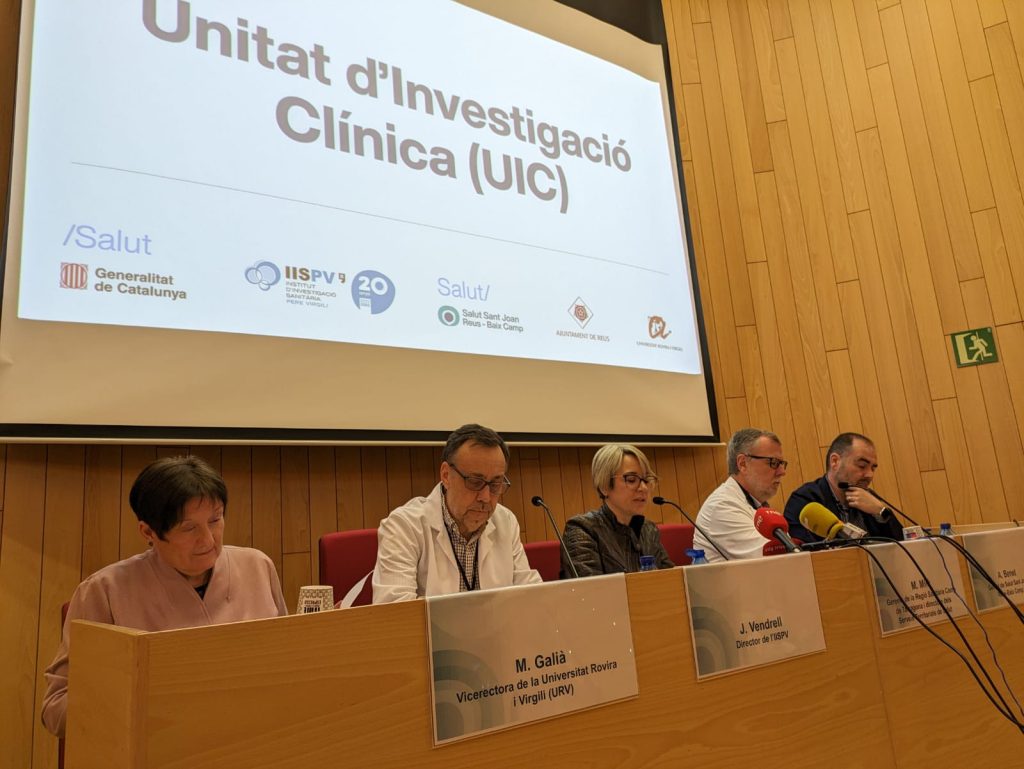
Reus, January 22, 2025. The province of Tarragona will take a step forward in carrying out clinical trials of cutting-edge drugs thanks to the construction, this year, of a Clinical Research Unit (UIC). This facility, which will occupy a space of 500 m2, has received a grant of 4,312,240 euros from the Carlos III Health Institute (Ministry of Science, Innovation and Universities) and will be located at the Sant Joan University Hospital in Reus. This new UIC has been promoted by the Pere Virgili Health Research Institute (IISPV) together with the Sant Joan University Hospital in Reus, and has had the collaboration of all the health institutions in the territory, the Rovira i Virgili University (URV) and local bodies such as the Reus City Council.
It is in a clinical trial when a medicine begins to be administered to a patient, in order to be marketed with all the guarantees. It goes through 4 processes before it is released on the market: from phase 1, which is the most experimental (in which a patient participating in this trial is treated for the first time with this drug) to phases 2, 3 and 4, which are more advanced and in which aspects such as effectiveness or the suitability of the dose are looked at, to finally end up authorizing its distribution and clinical application.
Currently, clinical trials in phase 1 are only carried out in research centers linked to large hospital structures, located mostly in the Barcelona area. The creation of this UIC will make it possible for this type of study to also be carried out in our territory: “We were already carrying out studies in phases 2, 3 and 4, but, from now on, this UIC will provide us with more infrastructure and resources to carry out clinical trials in phase 1. The expansion of resources (both human and those allocated to space) will help healthcare professionals attract more trials from the other phases; it will allow us to carry out a trial in all its stages, in short, from the most initial to the last, and it will favor the population of our territory to have access to therapies that are only carried out within the framework of a controlled study, bringing them closer to more experimental and innovative drugs”, explains Dr. Joan Vendrell, director of the Pere Virgili Health Research Institute (IISPV). He adds: “This will be especially relevant for patients with cancer, as it will allow therapies that have so far been limited exclusively to controlled trial settings to be brought closer. This initiative represents a step forward in reducing the current gap in access to this type of study, thus improving treatment opportunities for these patients.”
The director of the IISPV, Dr. Joan Vendrell, explains that “with a population of over 800,000 inhabitants, our territory has a potential that exceeds that of other regions with research centres concentrated in large hospital environments. Despite this reality, the current distribution of clinical trials means that access to these trials/studies is still insufficient for our population. The creation of the unit can not only help to reverse this situation, but will also allow research resources to be brought closer to professionals and patients, improving access to innovative therapies.”
For his part, Dr. Anton Benet, manager of Salut Sant Joan Reus-Baix Camp, highlighted “the factor of attraction and retention of talent” that having this facility at the hospital will mean. “The Clinical Research Unit will reinforce our university character, of research and innovation, and will provide value to society and professionals in the generation of knowledge”, he added.
The Universitat Rovira i Virgili very positively assesses the launch of this unit, which “allows us to promote scientific interconnection with the IISPV and promote institutional collaboration with entities in the territory to address a social challenge as important as health, one of the priority research areas of the Strategic Plan for Research and Innovation that we have just approved”, explains Marina Galià, Vice-Rector for Research at the URV. “Having modern and well-equipped spaces, with the appropriate infrastructure and the necessary personnel should allow us to consolidate new priority areas of research and develop research, innovation and transfer projects that have a high social impact on the territory”, he emphasizes.
For his part, Enrique Martín, Councilor for Health and Sports of the Reus City Council, declares: “the city council and the institute have been collaborating for some time to consolidate a leading position of the city in terms of health research, and that this directly or indirectly results in an improvement of services to the citizens. The presence of research infrastructures for the advancement in the treatment of diseases is important for this territory and, even more, I would like to emphasize that it helps us guarantee the equality of access to the population to trials and studies”.
This new UIC is scheduled to be operational by the end of 2026. It will also house a 3 Tesla high-resolution nuclear magnetic resonance device to study in detail different parts of the body as well as aspects of the functioning of organs that require special technology, outside the routine healthcare use of these devices.
The UIC will have the complicity of the public health system in primary care (CAPs) by bringing the studies closer to patients through their family doctor. This will be possible thanks to a real-time interconnection between the consultations and the UIC through an IT deployment that links routine healthcare activity with the trials that are active within the territory.
About IISPV
The Pere Virgili Health Research Institute (IISPV) is the centre that manages health and biomedical research in the province of Tarragona and brings together the Joan XXIII University Hospital in Tarragona, the Sant Joan University Hospital in Reus, the University Hospital Pere Mata Institute in Reus and the Verge de la Cinta University Hospital in Tortosa, as well as the Rovira i Virgili University. Since its creation in 2005, the institute has worked to ensure that biomedical research is translated into quality clinical practice for the benefit of patients and an improvement in the health of the population. More than 600 professionals, including researchers, technicians and staff in training, are part of the IISPV, which has 38 research groups divided into four strategic areas: the Metabolic Diseases and Nutrition area, with 16 research groups; the Infection, Immunity and Environment area, with a total of 10 groups; the Oncology area, with 6 more research groups; and the Neurosciences and Mental Health area, which includes 6 research groups.
IISPV researchers will also give talks on how nutrition and lifestyles contribute to improving our health.

Reus, Wednesday 9 October. The Pere Virgili Institute for Health Research (IISPV) and the research it develops in the field of health will be present at the 52nd edition of ExproReus, which will be held from Thursday 10 October until Sunday 13, in the facilities of firaReus Events (Bellissens Avenue, 40, Reus). During the weekend, the IISPV will be offering different activities in the space Foodtech & Nutrition Hub, a meeting point for companies within Redessa that are dedicated to offering technology, innovation and nutrition services.
On the one hand, researchers from the IISPV will offer free health tests to citizens who pass by the IISPV counter located in the Hub space. Specifically, body composition analyses will be carried out, tests which, in a very simple way and with a scale very similar to those used in the home, are used to identify the distribution of body fat and define what percentage of our weight is fat and what is water.
On the other hand, the IISPV will offer the so-called glycosylated haemoglobin controls in capillary blood, analyses that serve to determine the average blood glucose levels over the last three months. These tests, which are carried out with a small prick of the finger, are used to diagnose pre-diabetes or diabetes. Both these tests and the body composition tests will be carried out on Saturday evening between 18:00 and 20:00.
IISPV research staff will also give talks on how nutrition and lifestyle contribute to improving well-being and health. In this regard, the following lectures will be given:
In addition, on Saturday 12th, at 17:30h, Dr. Joan Vendrell, director of the IISPV, will give a talk in which he will present the IISPV and the research activity it carries out. In this sense and in the field of nutrition, it should be noted that there are several studies led by the Institute with findings that are helping to improve the diagnosis and prevention of diseases with a high incidence in our society, such as obesity, diabetes, Alzheimer’s disease or mental disorders.
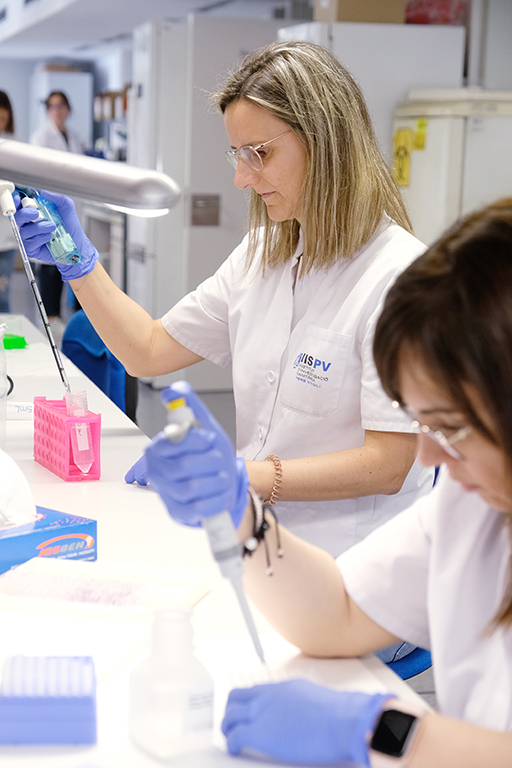
The Instituto de Salud Carlos III (Ministry of Science and Innovation) has granted us nearly 1 million euros to carry out different research and innovation projects, through the aid of the Acción Estratégica en Salud 2024 call (AES), which includes the R&D+i Projects in Health and the Technological Development Projects in Health (DTS).
These grants will allow us to continue to advance in the research of diseases related to some of our 4 major research areas (metabolism and nutrition; oncology and mental health and neurosciences) and innovate and transfer the advances made to society.
For 3 days, researchers from the Pere Virgili Health Research Institute (IISPV) have shared the projects they are leading and the challenges they have met
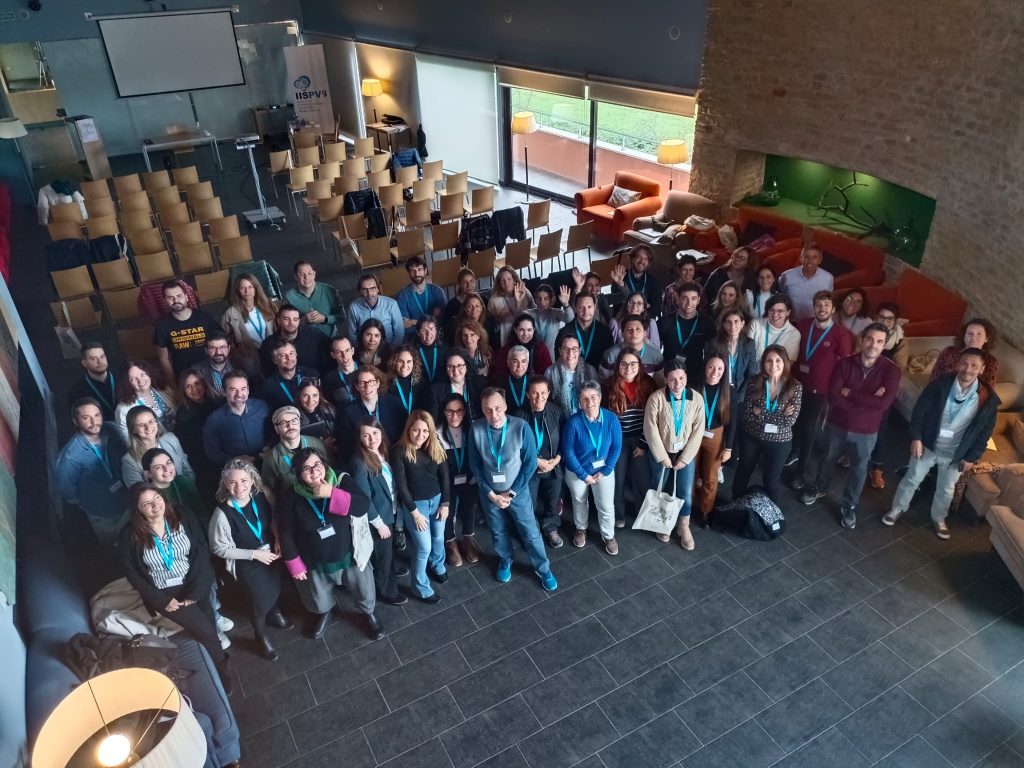
This week we held our retreat in Arnes! The researchers of the Pere Vrigili Health Research Institute (IISPV) have shared for 3 days the projects and studies they lead and the challenges achieved in the different fields of research in which we excel: that of metabolic diseases and nutrition; that of infection, immunity and environment; that of oncology and that of neurosciences and mental health.
At the retreat, which took place at the Vilar Rural d’Arnes hotel from November 7 to 9, researchers from more than 40 research groups that are part of the IISPV presented their projects and have participated in different activities with the aim of creating synergies and exploring future interdisciplinary collaborations. And it is that working together with different professional profiles and from different fields of study is essential for research in the field of health. In order to find new therapeutic routes for the prevention and treatment of diseases, the involvement of researchers from different fields, the implementation of very varied technologies and the use of methodologies from various disciplines are essential. For this reason, initiatives such as this retreat are essential to bring together ideas, projects and very different ways of approaching science in the area of health.
One of the outstanding activities of this retreat is the team building held on Wednesday afternoon: it was a unique opportunity to discover personal skills and characteristics, and thus be able to work in a team more consciously and effectively. The photo below illustrates this.
Thanks to all researchers and investigators for making this possible and until next time!
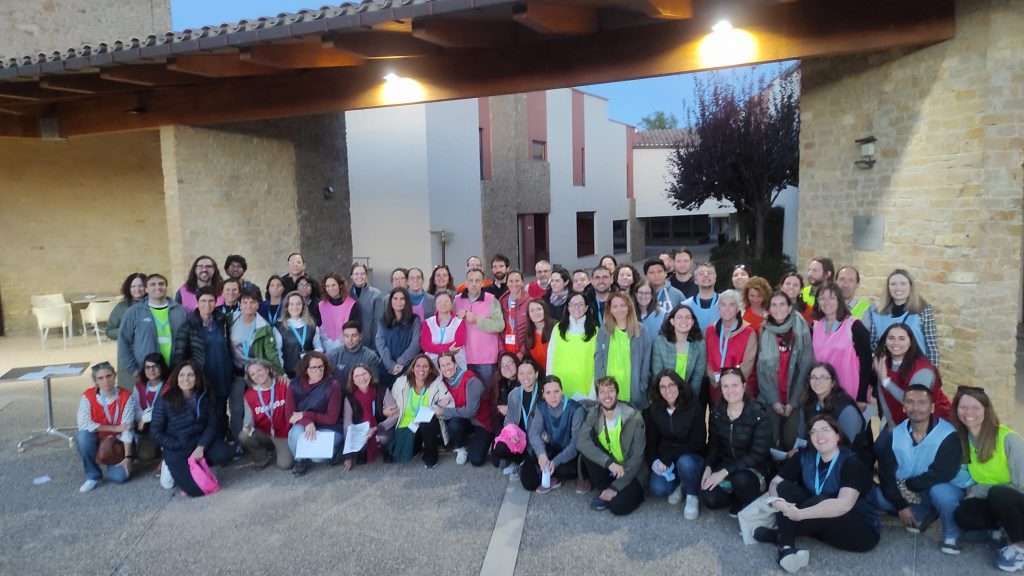
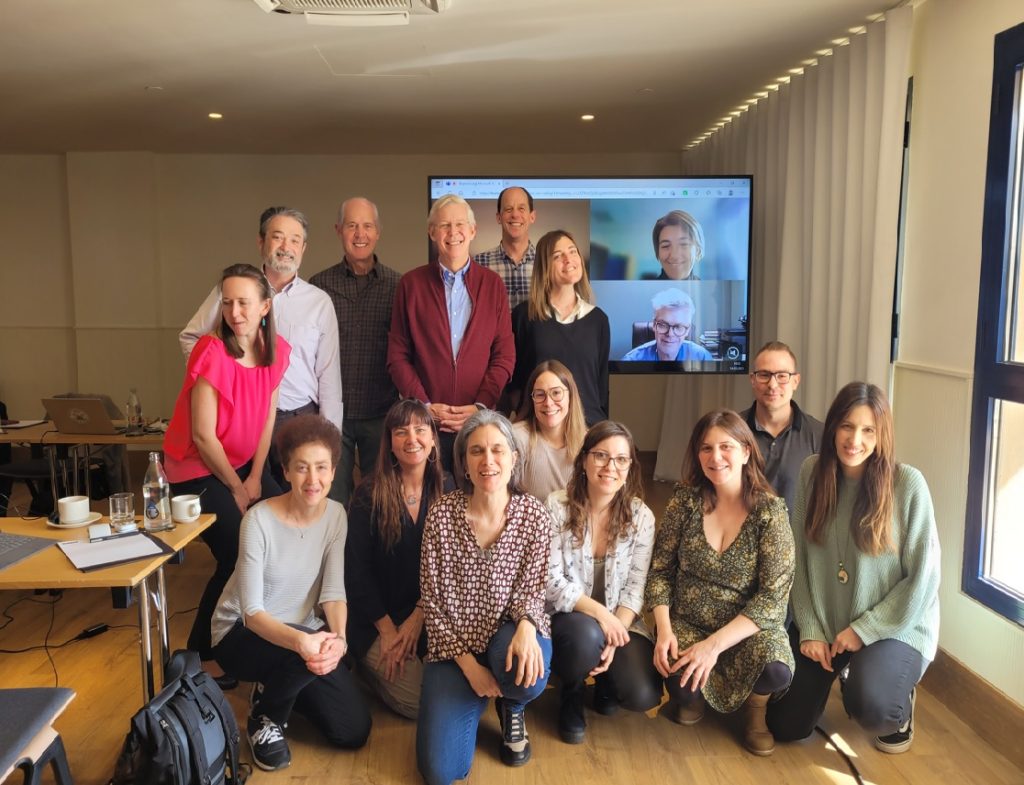
The IISPV office in Tarragona hosted the first face-to-face meeting of the BiomarKid project, which will identify key biomarkers for a better approach to childhood obesity. This meeting has been also attended by scientific experts in different areas such as metabolomics, diet and physical activity and innovation, as well as a representative of the IISPV spin-off Biosfer Telsab. The project will last 3 years.
The study will analyze the result of the interaction of aspects such as diet, environment or genetics and their effects on each person through metabolites, markers present in blood and urine.
The data from the more than 3,000 children of different ages and countries who have participated in the study will be collected in a web application so that, thanks to artificial intelligence, researchers and professionals in clinical practice can interpret them and thus make better decisions when treating patients with obesity.
A new study funded by the Alzheimer’s Association’s International Research Grant Program will attempt to answer this question
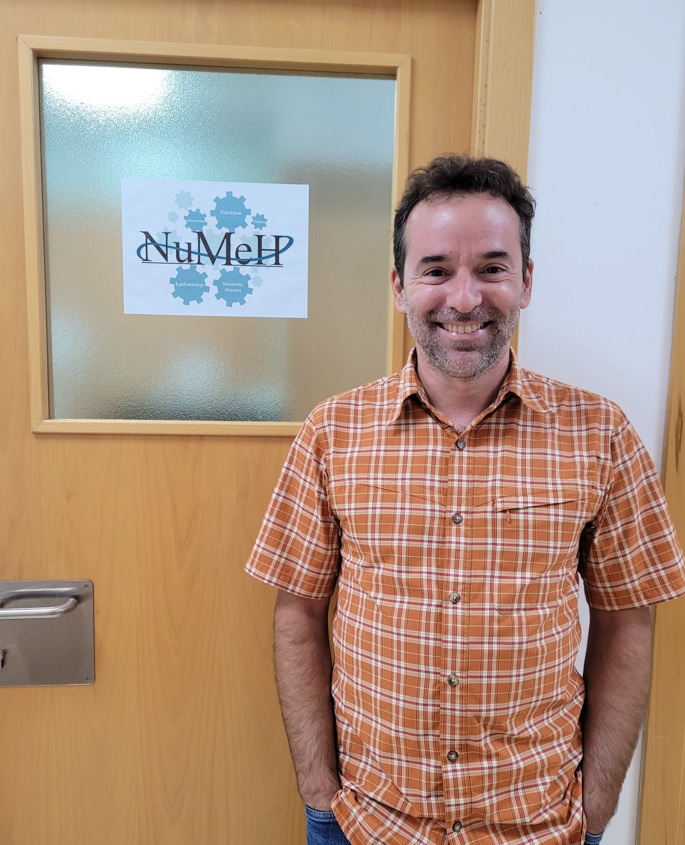
“How the Mediterranean diet is associated with reduced cognitive decline and lower risk of Alzheimer’s disease?” This is the research question that a new international project funded by the Alzheimer’s Association International Research Grant Program AARG-NTF-23-1027318 will try to answer.
“Substantial evidence supports that the Mediterranean diet (MD) is related to slower rates of cognitive decline and lower risk of Alzheimer’s disease (AD). However, the mechanisms explaining the aforementioned associations are still unknown.”, states Christopher Papandreou (PhD), the Principal Investigator of the project and member of the Nutrition and Metabolic Health Research Group (NuMeH) group of the Institut d’Investigació Sanitària Pere Virgili (IISPV).
This research hypothesis is that metabolite profiles reflecting adherence to the MD and capturing the metabolic response to this dietary pattern are consistent with a generally beneficial profile for cognition. The aim of this project is to identify groups of blood small molecules (metabolites) related to MD and examine their associations with cognitive change and AD.
This study, in collaboration with the Cognitive Disorders Clinic of Aeginition Hospital of the National and Kapodistrian University Athens (Greece), and the Department of Hygiene and Epidemiology at the University of Ioannina (Greece), represents a great opportunity to contribute to increase the knowledge on the MD-related metabolic processes that influence cognitive function, neurodegeneration and AD development.
With this study, the researchers from the NuMeH group (led by Prof. Mònica Bulló) and Grup de Neurociència Clínica i Epidemiològica (NeuroÈpia) (led by Dr. Jordi Julvez) will provide all their experience acquired over years of research in nutrition, metabolism and epidemiology/advanced statistics, to advance the understanding of the mechanisms underlying the benefits of the Mediterranean diet on cognition through metabolomics and strengthen the existing observational evidence, providing further support for public health recommendations on the dietary prevention of cognitive decline and Alzheimer’s disease.
With this study, the researchers from the NuMeH group (led by Prof. Mònica Bulló) and Grup de Neurociència Clínica i Epidemiològica (NeuroÈpia) (led by Dr. Jordi Julvez) will provide all their experience acquired over years of research in nutrition, metabolism and epidemiology/advanced statistics, to advance the understanding of the mechanisms underlying the benefits of the Mediterranean diet on cognition through metabolomics and strengthen the existing observational evidence, providing further support for public health recommendations on the dietary prevention of cognitive decline and Alzheimer’s disease.
With this study, the researchers from the NuMeH group (led by Prof. Mònica Bulló) and Grup de Neurociència Clínica i Epidemiològica (NeuroÈpia) (led by Dr. Jordi Julvez) will provide all their experience acquired over years of research in nutrition, metabolism and epidemiology/advanced statistics, to advance the understanding of the mechanisms underlying the benefits of the Mediterranean diet on cognition through metabolomics and strengthen the existing observational evidence, providing further support for public health recommendations on the dietary prevention of cognitive decline and Alzheimer’s disease.
• The project will make it possible to classify the types of breast cancer and predict the probability of metastasis thanks to the joint analysis of radiological and microscopic images
• It will be led by researcher Domènec Puig from the Institut d’Investigació Sanitària Pere Virgili (IISPV) and Universitat Rovira i Virgili (URV: ITAKA research group)
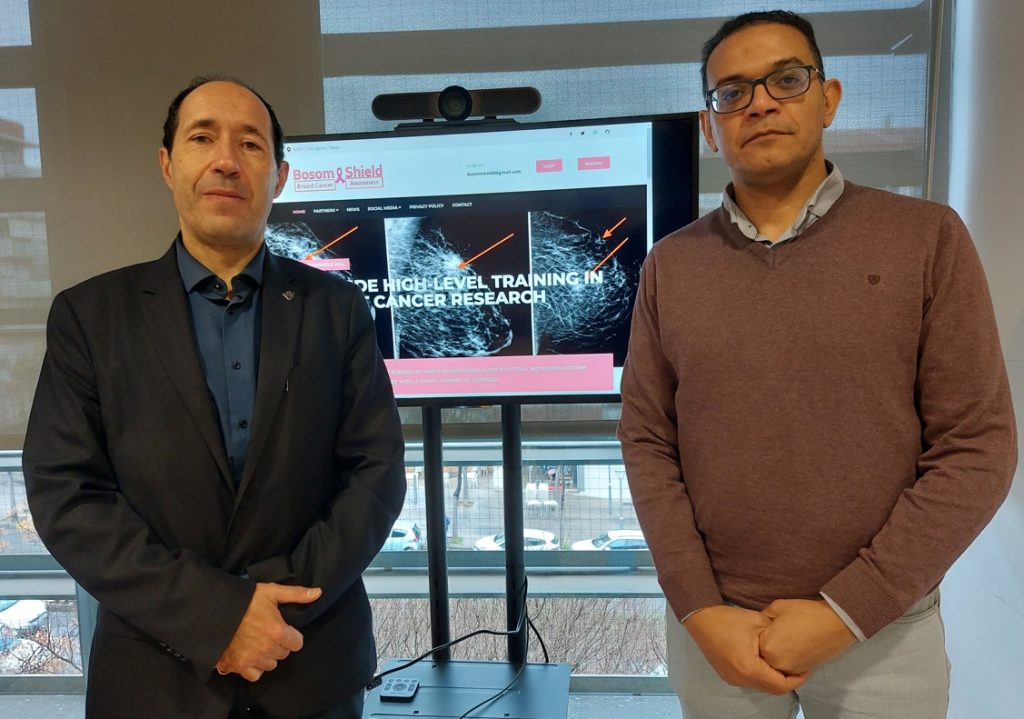
Researcher Domènec Puig from the IISPV and the URV will coordinate an international project that must play a key role in the detection and prevention of breast cancer. This is the BosomShield project, aimed at the development of a software platform that analyzes images to classify the different types of breast cancer and to predict their dangerousness and the probability of relapse due to metastasis.
The project is led by the Robotics and Intelligent Vision laboratory of the URV, headed by researcher Domènec Puig, of the IISPV and part of the ITAKA research group of the Department of Computer Engineering and Mathematics (DEIM) of the university. It has the collaboration of universities, hospitals, biomedical research groups and European, Asian and North American technology centers. It is financed by the Marie-Sklodowska Curie Actions (Horizon MSCA), the reference program of the European Union for doctoral and postdoctoral training. It will last until 2026.
“The main novelty of the project is that for the first time are put together the analysis of radiological images, that is to say, mammograms, magnetic resonances…, and the analysis of histopathological images, the microscopic images of the cells. These two types of images have until now been analyzed separately, and the fact of working together allows a much more accurate prediction, to advance to the maximum, to specify their characteristics, benignity or malignancy, and the possibilities of metastasis, expansion beyond the chest, recurrence…”, explains Domènec Puig.
The project is divided into ten subprojects, each developed by one of the partners and dealing with the different phases of the process: the analysis of the radiological images, the analysis of the histopathological images, the prediction of the possibility of relapse combining the two types of images and the design of the platform. Those responsible for each subproject are PhD candidates chosen by each institution. “According to European mobility rules, candidates must have resided in the country of which each institution is a part for a maximum of one year out of the last three, which encourages a very interesting international exchange”, points out Puig.
The URV team is in charge of the first sub-project, which aims to “determine the molecular subtype of breast cancer using multimodal radiological images”, as explained by Hatem Rashwan, researcher at the Robotics and Intelligent Vision laboratory and DEIM visiting professor: “It is not a simple task, but thanks to deep learning and artificial intelligence we can find the tumor markers through these radiological images.” Rashwan emphasizes the fact of determining the molecular subtypes of cancer, since “it allows us to know if it is dangerous or if there may be a relapse after a few years, in this case in collaboration with the Swedish partners”. In this sense, Domènec Puig explains that the sub-projects are designed to be interrelated, with meetings and common posts and a lot of mobility, with stays of those responsible for each project in the other institutions.
The role of the IISPV
The Oncological Pathology and Bioinformatics Research Group of the Institut d’Investigació Sanitària Pere Virgili (IISPV) participates in this project focusing on the analysis of the role of the immune response of the axillary lymph nodes with the risk of relapse due to distant metastasis. In this regard, Carlos López (who together with Marylene Lejeune are responsible for the group) emphasizes that it is essential to study a patient’s risk factors for developing this type of metastasis since when this occurs it is very likely that it will not survive. The Hospital Universitari Sant Joan (Reus) and the Hospital Verge de la Cinta (Tortosa, where this research group is located), are also involved in the project.
“Our body’s immune response is the defenses that protect us from both viruses and bacteria, but which have also been seen to play an important role in the evolution of tumors. In breast cancer, the immune response to the primary breast tumor has been investigated, but there are very few studies focused on its study in the axillary lymph node, which is usually the first place where breast cancer it metastasizes regionally. Our role in the project is to provide the clinical, pathological and radiological digital images and also at the histological level of the patients’ biopsies to be able to integrate all the information to identify those patients with a greater risk of distant metastasis. The most innovative part of the project apart from the application of artificial intelligence is the integration of information from the immune response of the lymph nodes”, explains Carlos López.
“In the end, together, we will create a platform within the scope of clinical practice, which will be in hospitals, which will allow the specialist doctor to receive a warning from the system, for example if there is any suspicion in a particular patient, and that it helps you make better, more grounded and efficient decisions”, says Domènec Puig, whose team has been working on projects to help diagnose breast cancer for some time. In fact, the idea of the project arises from the URV, side by side with the IISPV, giving it shape until finding the most refined proposal and contacting the rest of the institutions until forming the consortium that will take it forward. “This is our big project, the one that encompasses everything we’ve done so far and the one that will lead to having a universal, functional and adequate system”, concludes Puig.
Morant got a close look at the research being carried out at the institute in the different areas of metabolic diseases and nutrition; infection, immunity and the environment; oncology and neurosciences; and mental health
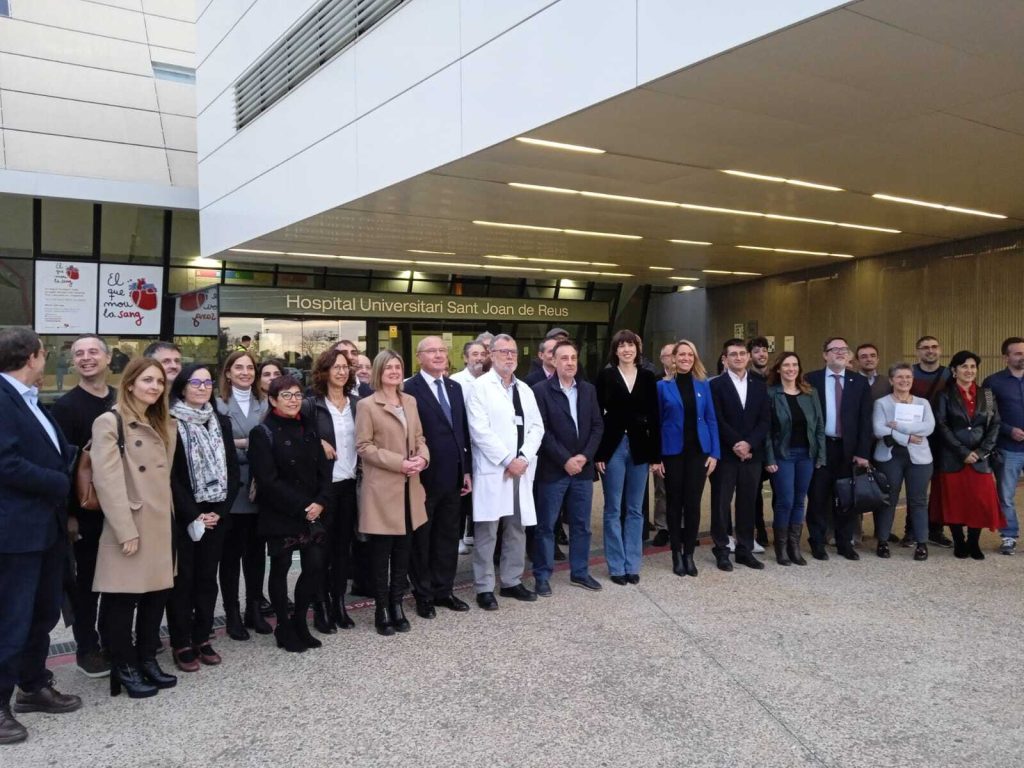
The Minister of Science and Innovation, Diana Morant, travelled today to the Hospital Sant Joan de Reus to meet with researchers at the Pere Virgili Institute for Health Research (IISPV). The head of this ministry wanted to see first-hand the research being carried out at the IISPV and was specifically interested in the projects that have recently received funding from this central government body, such as the one that will allow the development of a screening protocol for mental illnesses based on the detection of the most frequent major genetic alteration, the 22q11 deletion. The minister assured that ‘1 out of every 4 jobs created in recent years is in the field of science’.
Taking this genetic aspect into account when diagnosing this type of pathology will make it easier for the treatments to be more effective and personalised, and will help to reduce the personal, socio-economic and health costs involved for both the people who suffer from them and their families. This project is coordinated by Elisabet Vilella, deputy director of the IISPV and researcher at the Pere Mata Institute.
The minister also got a close-up look at other projects led by IISPV professionals which, like the previous one, have received funding from this central government body. Some of these are based on the multi-omic approach (i.e. they analyse data from the whole genome or the expression of all genes) of oncological and metabolic diseases. ‘We are the leading country in trials,’ says Diana Morant.
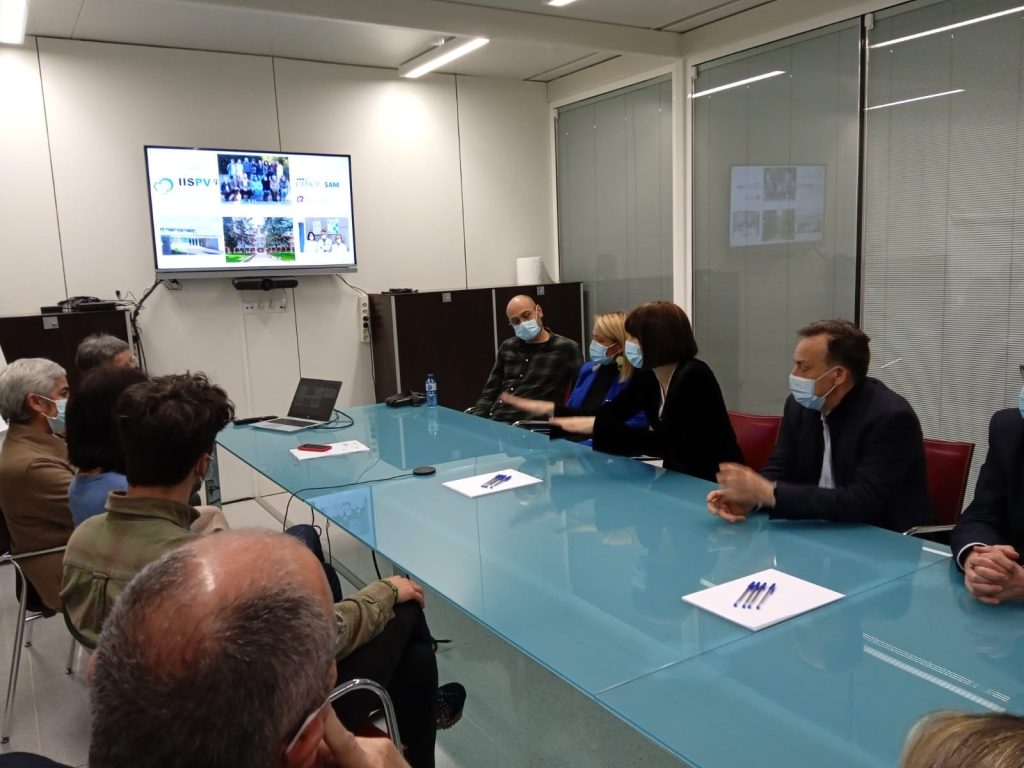
Others focus on researching tools to support the diagnosis of metabolic diseases and on investigating the application of artificial intelligence to improve the diagnosis of a type of cancer.
Other IISPV research projects that the minister was able to see during her visit to the IISPV focus on the study of dietary and lifestyle interventions that improve the quality of life of the elderly, children and adolescents and adults who have been diagnosed with a psychiatric illness.
Diandra Morant considers that ‘talent cannot only be in Barcelona or Madrid’.
The meeting with the Minister of Science and Innovation was also attended by 3 researchers with permanent contracts (Miguel Servet and Ramón y Cajal contracting programmes of the Ministry), and 2 researchers and 2 researchers with non-permanent post-doctoral contracts (Miguel Servet contracting programmes of the Ministry).
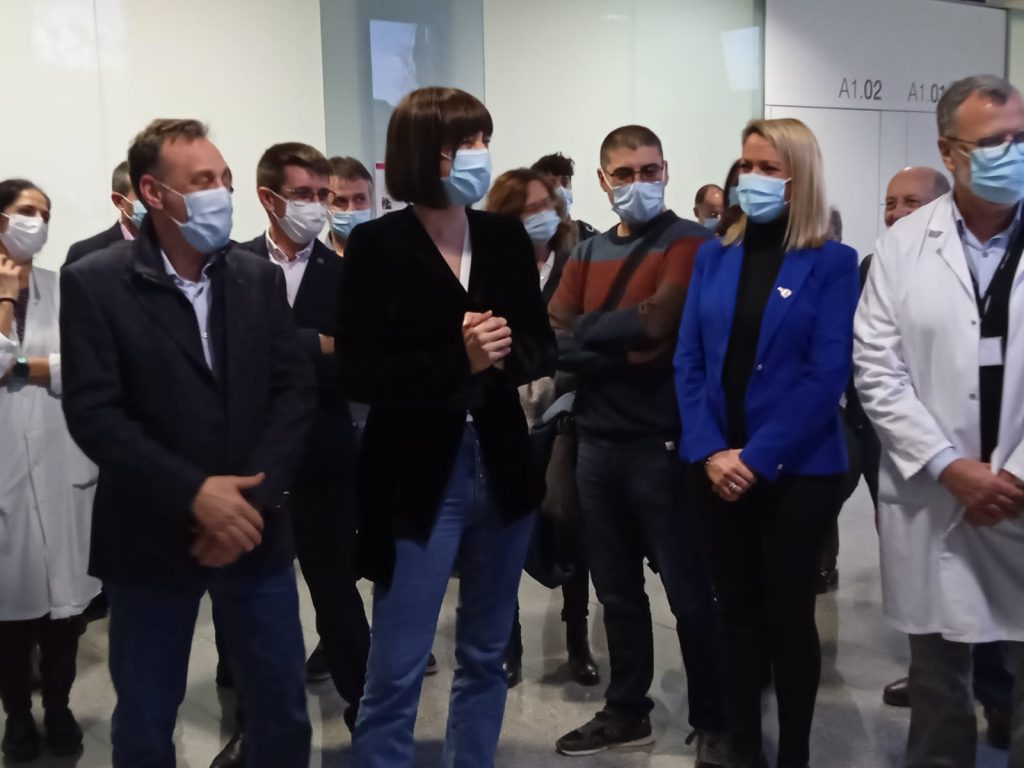
L’investigador de l’IISPV i catedràtic de la URV Jordi Salas-Salvadó presideix aquesta conferència científica en què es discutiran les recerques presents i les tendències futures en la investigació nutricional
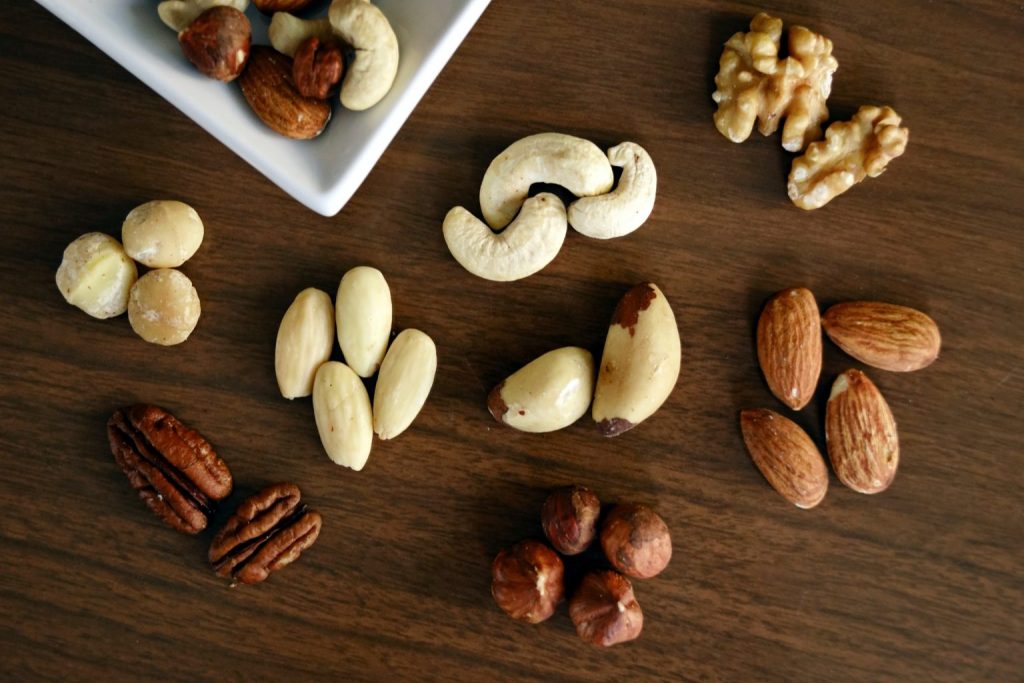
Amb els objectius de compartir les evidències actuals relacionades amb els beneficis del consum de fruita seca i definir mancances, necessitats i oportunitats en la recerca en aquest camp, els principals investigadors a nivell mundial sobre salut i fruita seca es reuneixen els dies 20 i 21 d’octubre a la seu de l’International Nut and Dried Fruit Council (INC), a Reus. Presidit pel catedràtic i investigador ICREA Acadèmia Jordi Salas-Salvadó, director de la Unitat de Nutrició Humana de la URV-IISPV i investigador del Centre d’Investigació Biomèdica en Xarxa d’Obesitat i Nutrició (CIBEROBN), el NUTS 2022 compta amb la participació de les ments més brillants en l’àmbit de la investigació nutricional.
Els temes clau que es tractaran a l’edició d’enguany fan referència al pes corporal, a la diabetis i la resistència a la insulina, a les malalties cardiovasculars, al sistema gastrointestinal i a l’envelliment cognitiu, entre d’altres. A mesura que la recerca sobre els beneficis del consum de fruita seca creix, aquesta trobada ofereix l’oportunitat de compartir i examinar detalladament allò conegut i establert i aquelles àrees de coneixement que necessiten ser estudiades. El professor Jordi Salas-Salvadó, un dels investigadors en nutrició més influents del món, remarca la importància d’aquest esdeveniment: “Tenim dades més que suficients per demostrar i ensenyar els efectes beneficiosos del consum de fruits secs sobre diferents malalties cardiometabòliques. Ara és el moment de resumir totes aquestes evidències per generar sinergies i intentar impulsar o modificar les al·legacions de salut que existeixen en relació al consum de fruita seca i els seus beneficis sobre la salut”.
El NUTS 2022 reuneix de forma excepcional a 27 ponents i moderadors de 13 països d’arreu del món, entre els quals hi ha investigadors de gran rellevància com Frank Hu, director del Departament de Salut Pública de la Universitat de Harvard, Joan Sabate, professor de Nutrició i Epidemiologia a la Universitat Loma Linda, David Jenkins del Departament de Ciències de la Nutrició de la Universitat de Toronto, David J. Baer del Departament d’Agricultura dels EUA, Linda Tapsell, professora emèrita de la Universitat de Wollongong d’Austràlia i Penny Kris-Etherton del Departament de Ciències de la Nutrició de la Universitat de l’Estat de Pennsylvania, entre d’altres. S’espera que com a resultat d’aquesta conferència organitzada des de la Universitat Rovira i Virgili (URV-IISPV) i des del CIBEROBN, es publiquin les conclusions en una revista científica internacional.
L’INC, principal sponsor de NUTS2022, és un paraigües internacional per a la indústria de la fruita seca amb més de 880 membres d’empreses del sector de més de 80 països, que representen més del 85% del valor comercial mundial de la fruita seca. Goretti Guasch, directora executiva de l’INC, considera que “la investigació en nutrició és un pilar important de les activitats de l’INC” i reconeix que estan emocionats de tenir la oportunitat d’acollir investigadors d’arreu del món. La missió de l’INC és la d’estimular i facilitar el creixement sostenible de la indústria de la fruita seca i és l’organització líder en termes de salut, nutrició, seguretat alimentaria i regulacions internacionals sobre fruita seca”.